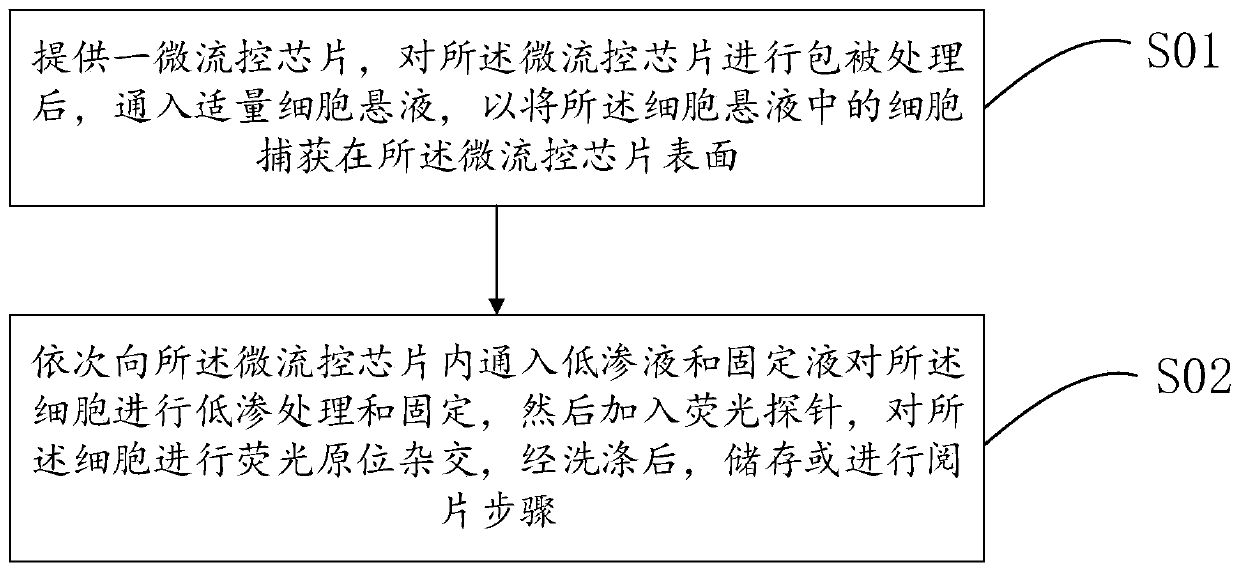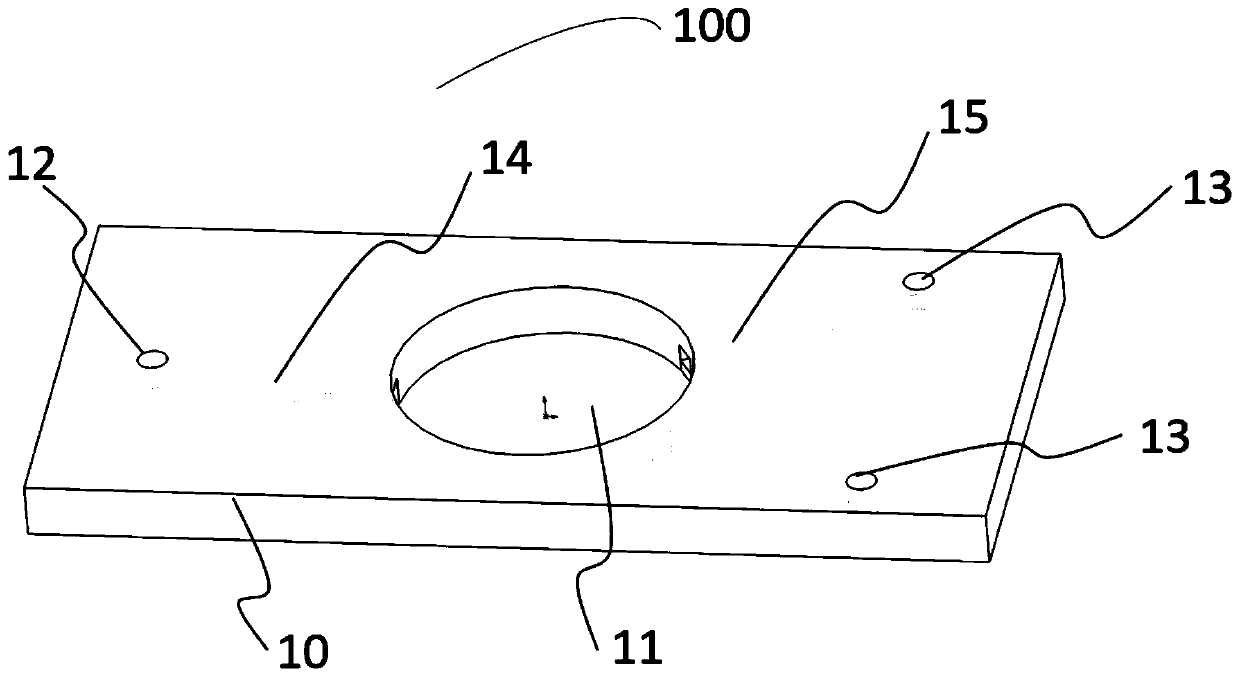Cell fluorescence in situ hybridization method based on microfluidic chip and application thereof
A fluorescence in situ hybridization and microfluidic chip technology, applied in the field of microfluidics, can solve the problems of difficult automatic operation, large reagent consumption, complicated operation steps, etc., achieve good fluorescence in situ hybridization effect and save reagent consumption , Analyzing the effect of high detection sensitivity
- Summary
- Abstract
- Description
- Claims
- Application Information
AI Technical Summary
Problems solved by technology
Method used
Image
Examples
preparation example Construction
[0038] Optionally, the preparation method of the microfluidic chip includes:
[0039] A patterned hard template and a flow channel layer substrate are provided, combined with imprinting technology, the flow channel layer substrate is imprinted, punched and cleaned to form cell capture holes on the flow channel layer substrate, at least one further The pattern structure of the sample hole, at least one sample outlet hole, the first flow channel and the second flow channel;
[0040]A sealing layer substrate is provided, and a microfluidic chip is obtained by aligning and bonding the sealing layer substrate and the embossed, punched and cleaned flow channel layer substrate, and heat-pressing and sealing them.
[0041] Optionally, the materials of the channel layer substrate and the sealing layer substrate include polydimethylsiloxane (PDMS), cycloolefin copolymer, polystyrene, polymethacrylate, polyterephthalic acid One or more of glycol ester, polytetrafluoroethylene, polypropi...
Embodiment 1
[0070] A cell fluorescence in situ hybridization method based on a microfluidic chip, comprising:
[0071] A microfluidic chip is provided, and the microfluidic chip is coated with 0.1% polylysine; the cultured A549 cells (human non-small cell lung cancer cells) are digested, resuspended, diluted to a certain concentration and passed through into the microfluidic chip;
[0072] After passing through the cells, the hypotonic solution (0.4% potassium chloride and 0.8% sodium citrate mixed at a volume ratio of 1:1) was passed into the microfluidic chip in turn to perform hypotonic treatment on the A549 cells, and after 10 minutes, continue to pass through A549 cells were fixed in a fixative solution (mixed with absolute ethanol and glacial acetic acid at a volume ratio of 3:1) for 8 min; then 70%, 90% and 100% ethanol were sequentially passed into the microfluidic chip for 1 min; after that, CEP8 -The FITC probe solution was mixed and passed into the microfluidic chip, denatured...
Embodiment 2
[0074] A cell fluorescence in situ hybridization method based on a microfluidic chip, comprising:
[0075]Provide a microfluidic chip, use 0.1% polylysine to coat the microfluidic chip; pass the fetal nucleated red blood cell sample cells into the microfluidic chip;
[0076] After passing through the cells, the hypotonic solution (0.4% potassium chloride and 0.8% sodium citrate mixed at a volume ratio of 1:1) was sequentially passed into the microfluidic chip to perform hypotonic treatment on the fetal nucleated red blood cells. After 10 minutes, Continue to pass through the fixation solution (mixture of absolute ethanol and glacial acetic acid at a volume ratio of 3:1) to fix the fetal nucleated red blood cells for 8 minutes; then use 70%, 90% and 100% ethanol to pass through the microfluidic chip for 1 minute. ; Then mix the CEP8-FITC probe solution and pass it into the microfluidic chip, denature at 75°C for 12 minutes; hybridize overnight at 42°C; after the hybridization i...
PUM
 Login to View More
Login to View More Abstract
Description
Claims
Application Information
 Login to View More
Login to View More - R&D
- Intellectual Property
- Life Sciences
- Materials
- Tech Scout
- Unparalleled Data Quality
- Higher Quality Content
- 60% Fewer Hallucinations
Browse by: Latest US Patents, China's latest patents, Technical Efficacy Thesaurus, Application Domain, Technology Topic, Popular Technical Reports.
© 2025 PatSnap. All rights reserved.Legal|Privacy policy|Modern Slavery Act Transparency Statement|Sitemap|About US| Contact US: help@patsnap.com



